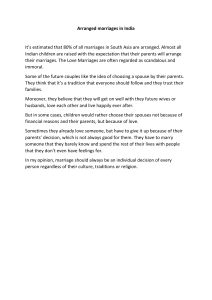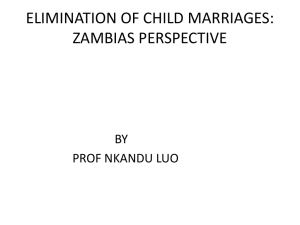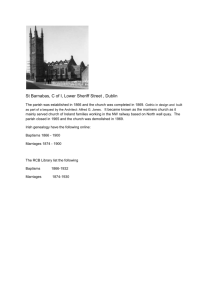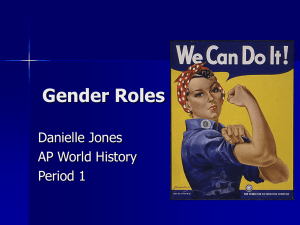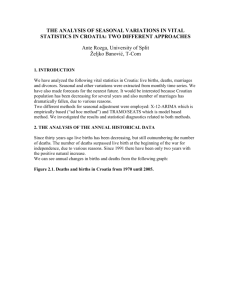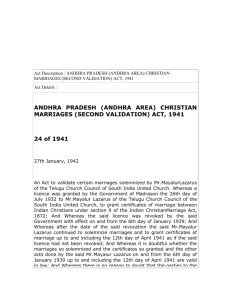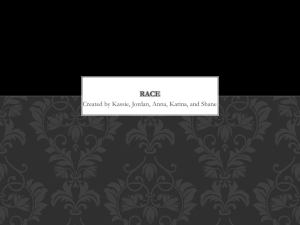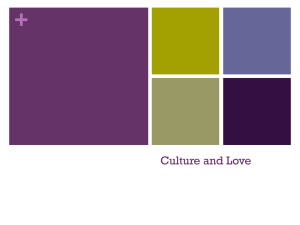Sociology Revision2
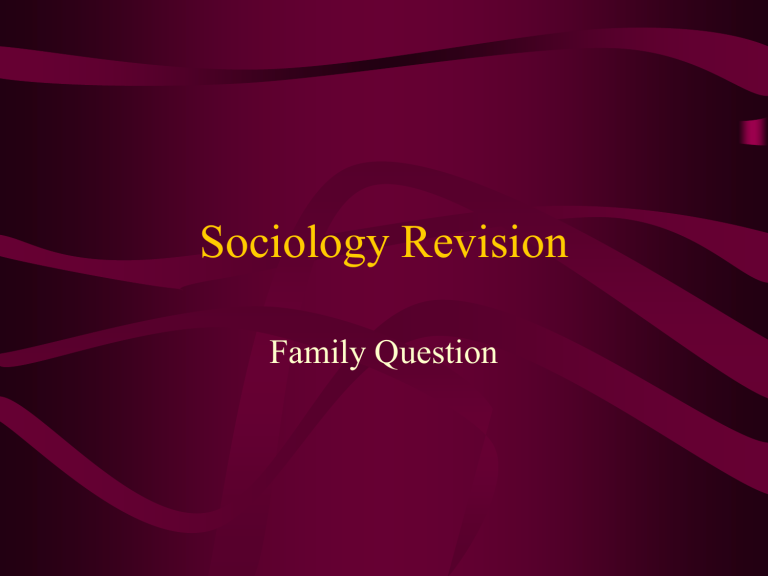
Sociology Revision
Family Question
Item A
Functionalist sociologists have argued that with the transition from pre-industrial society to industrial society, the family ha undergone a change in its structure. For example, Parsons has argued that while in pre-industrial society the family is extended in structure and performs a wide variety of functions, in industrial society the nuclear family becomes the dominant family structure.
Some sociologists also argue that the modern family is much more equal than in the past. For example, Willmott and Young claim that in today’s ‘symmetrical’ nuclear family, husband’s and wives’ conjugal roles have become much more similar than in the patriarchal family of the Victorian era. However, feminists have criticised this view of the modern family.
Item B
The last three decades of the twentieth century showed two very striking trends
1, a decline in the number of first marriages, that is marriages where neither partner had been married before
2, a rise in the number of divorces.
Compared with the figures for the early 1970s, the statistics for the late 1990s showed about half as many marriages and twice as many divorces. Although
Great Britain had the highest divorce rate in Europe, the same trends were evident elsewhere, especially in the more economically developed and less religious countries of Northern Europe.
There has also been a slow decline in the number of religious marriage ceremonies and a corresponding rise in the number of civil marriages in registry offices. However, while most first marriages take place in church, among those couples where one or both partners have been married before, only one in about five of marriages ceremonies took place in church
Family Question
• (a)Explain what is meant by the patriarchal family.
(2)
• (b) Suggest two criticisms which feminist sociologists might make of the view that husbands and wives are now equal (4)
• (c ) Suggest three functions that the extended family may perform.
• (d) Identify and briefly describe two factors which may have produced greater equality between the roles of husbands and wives. (8)
(a)
• A family found in a society which is patriarchal.
• 0/2
• Just recycles the question.
• You need to define patriarchal
• Eg male dominated society
(b)
• 1. There is still domestic violence by men towards women
• 2. Men and women have different functions
• 2/4
• Second point gets no marks because the meaning is unclear and not particularly linked to feminism.
• Could have said although women go out to work they are still expected to do the housework and childcare.
( c)
1. It can provide a babysitting service, where grandparents look after the young children while their parents are at work.
2. It can arrange marriages between families
3. It can provide support eg when migrating to a new area in search of work having extended family contacts there can help them find somewhere to live
6/6
All three functions are correct.
Other should include Andersons point about taking in orphaned children in the Industrial period, in pre – industrial society family was also a unit of production.
(d)
• 1 women now go out to work more than in the past. This means that they can have more financial say in the family eg) in decisions about what to spend money on since now they are contributing financially ie they are breadwinners as well as homemakers.
• 2. Availability of female contraception has led to greater equality between the sexes.
(d)
• 6/8
• Only gets 2/4 for the second point because she makes a good point but doesn’t explain or describe it properly.
• Better to say the pill has taken away men’s power to decide when and how many children their wife will have
(e) Examine the reasons for changes in the position of children in the last 200 years.
(20)
How to do well
• The sample answer is not focused and rifts from one era to the other.
• Give your answer focus and apply material to the set question from the start.
• Sample looks at infant morality, education, welfare state, family size and labour laws. You cold also look at the effect of media, children as consumers, children’s rights, class, gender, ethnic and cross cultural differences in childhood
• Sample answer is short on sociological concepts. Should have included social construction of childhood, child centred family/ society and age patriarchy.
• Main focus of question is knowledge and understanding but there should still be evaluation. EG is the position of children better today than it was? Is childhood disappearing?
Using material from Item B and elsewhere, assess sociological explanations of the changes in the rates of marriage and divorce.
(20)
How to do well
• Make sure your points are explained fully- why are women more independent financially?
• Make sure your points all relate to the question clearly. – what is the relevance of single parent families being an emerging type?
• Make food use of the item . Eg could have used the trends in religious and civil ceremonies. Could suggest reasons for the patterns.
Secularisation.
• Assess = evaluation, strengths and weaknesses. Cold contrast feminist views with functionalist. Sociological explanations =different perspectives
• Deal with both parts of the question.
• Sample answer ends abruptly
• Write a conclusion that sums up the main explanations and says something about their usefulness. You could use the sample’s penultimate paragraph further as a conclusion by arguing about the loss of functions, growing individualism, and greater independence for women have led to what Giddens calls ‘coupling and uncoupling’ rather than marriage and the family.
